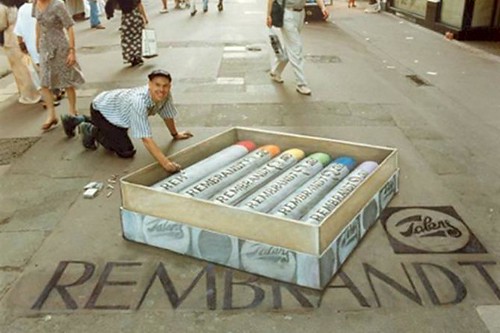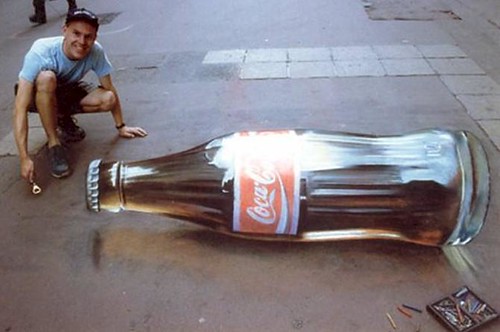3D Art on Sidewalks
Have you witnessed 3D art on sidewalks? Chalk murals that create optical illusions so compelling they stop traffic?
I’ve mused about 3D sidewalk artwork before, wondering not only if it can blow minds but possibly also slow speeding vehicles. But I haven’t pondered its potential as a vehicle for storytelling. And yet it obviously is!
Telling a Story via 3D Art on Sidewalks
Literature and film have explored the idea of stepping into drawings for ages, using artwork as a gateway between reality and illusion. And yet 3D sidewalk and street artists are often dismissed with an amused shrug.
“Cool.”
“Weird.”
“It’s not graffiti exactly, but who’s going to clean it up?”
Is 3D Art on Sidewalks Just Chalk Graffiti?
3D art on sidewalks is cool and weird and graffiti, but cleaning it up is rarely a problem. In fact, it tends to vanish altogether too quickly. Rain. Pedestrians. Vehicle traffic. Perhaps its ephemeral nature is part of what makes 3D art on sidewalks and roadways so appealing. An invitation into another reality that will expire almost before you’ve decided whether or not to dive in.
Street artists like Julian Beever, Edgar Mueller, Eduardo Rolero, Manfred Stader and Kurt Wenner distort perspective with little more than chalk, unfettered imaginations and a near perfect ability to render anamorphic illusions. When their artwork is viewed from the correct angle, an ordinary street or sidewalk creates the illusion of three dimensions.
Their chalk art transcends mere graffiti and many other art forms in its capacity for interactive storytelling. 3D art on sidewalks introduces a narrative possibility that engages viewers. Pedestrians and drivers stop and look. Perhaps they reorient themselves to better appreciate the optical illusion. They pause and let their eyes wander over the mural, actively suspending disbelief in order to engage with the image. In many cases the audience/viewer even choose to step into the image, playing along with the illusion, often posing for friends with cameras to memorialize the encounter.
A bit like a real life video game…
Related articles
- Graffiti or Art? (raventools.com)
- 3-Dimensional Art on Sidewalks (callegaleria.wordpress.com)
- Brilliant but Pointless Street Flyers (essexonlakechamplain.com)
- Optical Illusion on the Streets of Istanbul by Pejac (justimagineddoc.wordpress.com)
- Florida chalk festival yields mind-bending art works (sfgate.com)
- This Massive Sinkhole in Sweden is Just an Optical Illusion (techeblog.com)
- 3-Dimensional Street Art Easily Conquers Your Fear of Heights (trendhunter.com)





